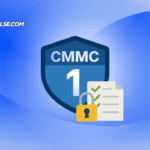Enabling Multi-Channel Funnels: Vital Components to Consider
Are you heavily reliant on last-click performance data when making critical business decisions? If that’s the case, it’s time to broaden your horizons and explore the realm of Multi-Channel Funnels. This powerful feature offered by Google Analytics has the potential to unveil invaluable insights that may remain concealed within other reports. By utilizing Multi-Channel Funnels, marketers can bridge the gaps between their paid AdWords performance and gain a deeper understanding of website analytics data.
The significance of Multi-Channel Funnels extends far beyond simply comprehending how content performs across different channels—it can effectively contribute to generating conversions as well. As a PPC manager, it is crucial to possess a comprehensive understanding of PPC performance. Thankfully, Google has stepped in to address this challenge with the introduction of multi-channel funnels, providing a visual representation of how various marketing channels collaborate to drive conversions. In this blog post, we will delve into the fundamentals of multi-channel funnels, exploring what features must be enabled to use multi-channel funnels and other information. Stay tuned for an informative journey that will equip you with the knowledge needed to optimize your marketing strategies and elevate your conversion game.
Key Features to Harness Multi-Channel Funnels
Take a look at a quick overview of multi-channel funnels and what features must be enabled to use multi-channel funnels along with much more.
Unveiling the Power of Multi-Channel Funnels: An Essential Guide
Unlocking the potential of Multi-Channel Funnels is crucial for businesses aiming to gain valuable insights into their marketing strategies and optimize their conversion rates. These dynamic reports, available within Google Analytics, shed light on the diverse range of marketing channels that contribute to conversions, as well as the precise customer interactions leading up to those conversions. In simpler terms, Multi-Channel Funnels provides a comprehensive view of the customer journey—from the initial exposure to an ad, email, or social media post, all the way to website visits and final purchases.
The generated reports serve as a goldmine of information for businesses, allowing them to identify the most effective aspects of their campaigns and content. With this knowledge, they can strategically allocate resources and refine their marketing efforts. Unfortunately, many businesses remain unaware of the advantages offered by Multi-Channel Funnels. And these reports are often overlooked due to a lack of understanding regarding their usage and the underlying value of the data they provide. But by investing some time and effort, you will uncover the transformative potential of Multi-Channel Funnels, enabling you to harness their insights and elevate your marketing strategies to new heights.
What Features Must be Enabled to Use Multi-Channel Funnels?
Before diving into the wealth of insights provided by Multi-Channel Funnel Reports, it is essential to ensure that certain features are enabled and configured to maximize the effectiveness of this tool. One of the fundamental prerequisites is tracking goals—a standard practice in the eCommerce realm. Google Analytics offers pre-defined high-level goals, such as revenue, acquisition, inquiry, or engagement, and provides a range of goal templates within specific categories. However, it’s important to note that selecting an industry or business type in your Google business property is crucial, as it determines the availability of industry-specific goal templates.
To further customize your goals and align them with your business objectives, users have the flexibility to create custom goals. These can include specific parameters such as the number of pages viewed during each session, the duration of audience engagement on your website, directing traffic to a particular webpage, or prompting users to complete specific activities. By incorporating industry-specific goals and customizing them to suit your unique requirements, you pave the way for effectively utilizing multi-channel funnels in Google Analytics.
Having at least one established goal in Google Analytics serves a vital purpose—it provides an endpoint or destination for your Multi-Channel Funnel report. This knowledge becomes instrumental in understanding the diverse activities across different channels that ultimately lead users to your website, guide their navigation through various web pages, and drive them to complete desired actions, such as making a purchase or filling out a form. By harnessing the power of multi-channel funnels and establishing clear goals, you gain a comprehensive understanding of your customer’s journey, empowering you to optimize your marketing strategies and drive meaningful conversions.
What Can Multi-Channel Funnel Reports be Used for?
Multi-Channel Funnel Reports in Google Analytics offer a treasure trove of valuable information that can revolutionize your marketing strategies and drive conversions. By delving into these reports, you gain a comprehensive understanding of how various channels contribute to your business’s success and uncover insights into customer behaviour throughout their conversion journey. Let’s explore the remarkable advantages and actionable insights that can be derived from Multi-Channel Funnel Reports:
- Channel Selection: Utilize the data to identify the most effective channels for increasing conversions, allowing you to allocate resources and optimize your marketing efforts strategically.
- Conversion Influence: Determine which channels are assisting or influencing conversions, enabling you to nurture those channels and capitalize on their impact.
- Customer Journey: Gain deep insights into how your customers are converting, understanding the different touchpoints and interactions that lead to successful conversions.
- Channel and Content Interaction: Identify the channels and content that customers are engaging with, empowering you to tailor your messaging and optimize engagement across different platforms.
- Conversion Paths: Discover the common paths that customers follow before converting, providing valuable guidance for streamlining their journey and enhancing the conversion process.
- Channel Optimization: Identify channels that may require adjustments or reallocation of resources, ensuring you make informed decisions to maximize conversion rates.
- Customer Timeframe: Understand the timeframe of the customer’s journey, allowing you to optimize your campaigns and messaging based on their specific needs and behaviours.
- Conversion Speed: Determine how long it takes for customers to convert, enabling you to optimize your strategies for quicker conversions and improved customer experiences.
- Campaign Adjustments: Leverage customer behaviour insights to fine-tune your campaigns, ensuring they align with customer preferences and drive optimal results.
By leveraging the power of Multi-Channel Funnel Reports, businesses can tap into invaluable insights that inform their decision-making and drive marketing success. Stay tuned for our next blog post, where we will delve into the practical steps for unlocking the full potential of Multi-Channel Funnel Reports.
What Insights Can You Draw from Multi-Channel Funnels Feature?
Multi-Channel Funnel Reports offer a wealth of valuable insights to businesses seeking to understand the customer journey and optimize their marketing efforts. Within this powerful feature of Google Analytics, several key reports provide in-depth analyses of conversion paths, customer interactions, and valuable touchpoints. Let’s delve into the important reports available in Multi-Channel Funnel analysis:
-
Assisted Conversions Report:
Gain a comprehensive understanding of the channels that contribute to conversions. This report highlights the channels that initiate, complete, and assist conversions, providing insights into the most effective channels and their roles in the conversion journey.
-
Funnel Overview Report:
Visualize and compare customer journeys during specific timeframes. This report reveals overlapping paths and showcases the crucial touchpoints and content that influence conversions, helping marketers identify high-impact strategies.
-
Path Lag Report:
Learn about the number of interactions customers have before achieving your predefined goals. This report sheds light on the conversion paths with swift low-value conversions versus longer paths that lead to higher customer value, offering valuable insights for optimizing customer engagement.
-
Time Lag Report:
Break down the timeframe of customer conversions within a window of zero to twelve days. This report provides valuable information on sales cycle lengths and how different content and timelines impact conversions, empowering businesses to fine-tune their campaigns.
-
Top Conversion Paths Report:
Explore the various groupings of customer paths and identify common patterns among them. From paid touchpoints to social media interactions and email engagements, this report unveils the diverse conversion paths customers follow, enabling marketers to optimize channel strategies.
By leveraging the insights provided by these essential Multi-Channel Funnel reports, businesses can refine their marketing strategies, optimize customer journeys, and maximize conversions. Stay tuned for our next blog post, where we will explore practical tips for utilizing Multi-Channel Funnel reports effectively.
In conclusion, this blog has provided comprehensive insights into the key features that must be enabled to use Multi-Channel Funnel reports. We have addressed your questions and equipped you with valuable information to enhance your marketing efforts. By leveraging these features, you can make informed decisions, allocate resources effectively, and witness a significant boost in conversions. Armed with the right knowledge, you have the power to propel your business to new heights. Embrace the potential of Multi-Channel Funnel reports and watch












